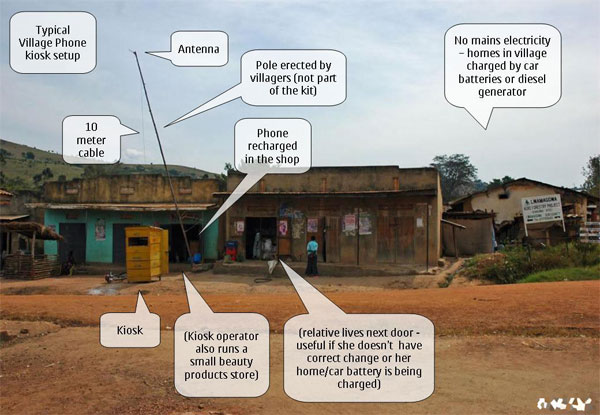Simon has hardwired a way to open and lock his door remotely via his phone, as well as get tea brewing and other manual and remote tasks. The video speaks for itself, so I’m not going to say anything other than to link you to my past thoughts on challenges for tech entrepreneurs in Africa.
Tag: phone
A BIG Thanks!
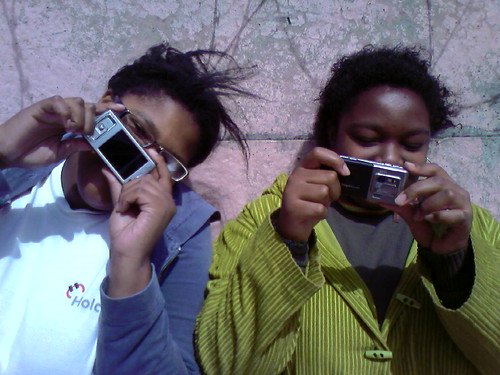
Thanks to the kindness of AfriGadget readers we were able to take a simple idea and far exceed expectations. We were looking for a mobile phone for our two young ladies in South Africa to start doing some AfriGadget mobile phone reporting on. Instead, we raised extra money and had 2 more smart phones given directly to the project!
What Next?
We’re off to the races with the Sony Ericsson C702 that you helped us buy, and the Nokia N95 that David Sasaki provided to Zintle and Lukhona when he was in South Africa earlier this month (pictured above).
The new phone from Michele is going into my bag with my Nokia N95 as I try to find another two mobile reporters in some other countries in Africa. I’ve got one eye on a likely candidate in Kenya, but want to try to get outside my normal stomping grounds in East Africa. If you have an idea of someone who has a good multimedia eye, likes to tell stories and would be good for AfriGadget, send them my way please.
Phones
These two individuals went far beyond what we expected and actually gave their Nokia N95’s to the project:
Michele Bowman, futurist at Fringehog (Nokia N95)
David Sasaki of Global Voices (Nokia N95)
Donations
We tried to raise $500, and received $595 $670… Wow, thanks!
Jean Hopkins
Ken Banks
Heather Ford
Henk Kleynhans of Skyrove
Larry Bibayoff
Nicola from the UK
Matthias Zeeb
Elizabeth Meiners
Juergen Eichholz
Andre Vermeulen
Dr. Bakali
Russ Hersman
David D’Angelo of Serac Films
Alex Sauriol
Tielman Nieuwoudt
Georgia Popplewell
Ian Reclusado
Maxime Biais
Matt Heffron
Again, a big thank you to everyone who helped make this a reality. Let’s see if we can grow AfriGadget from the grassroots up.
(If your name isn’t linked above, and you would like it to be, please send me the URL you would like me to attribute it to)
Support AfriGadget’s Young Mobile Reporters
If you donated before your funds never made it to us and are lying unclaimed in your PayPal account. Please consider re-sending that money via the new widget below. (this one does work, I have tested it)
The Grassroots Reporting Project is one of the initiatives that we’ve been talking about for a little while here at AfriGadget. It’s where we put smarter mobile phones into the hands of young Africans and get them to report AfriGadget stories. We’re at a point now where we’ve identified the right people, what we need is your help in raising $500 to make it happen.
The pilot project
As this is our pilot project, we want to start small and learn lessons before we expand to other parts of the continent. Our first group is made up of some youth from the Khayelitsha township outside of Cape Town. Local blogger Frerieke van Bree is acting as their blogging and multimedia mentor as they are taught how to find and tell stories about local inventors, innovators and local people doing ingenious things around Cape Town.
Two of the individuals that will be taking part in the program are Lukhona Lufuta and Zintle Sithole. Both live in Khayelitsha Township near Cape Town. They are 12th grade students who are part of a 12 week leadership program called COSAT (Centre of Science and Technology, a High school for science, IT and Math).
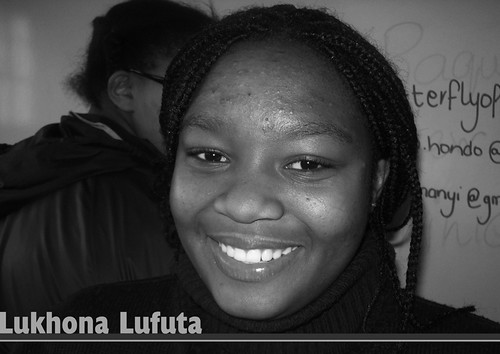
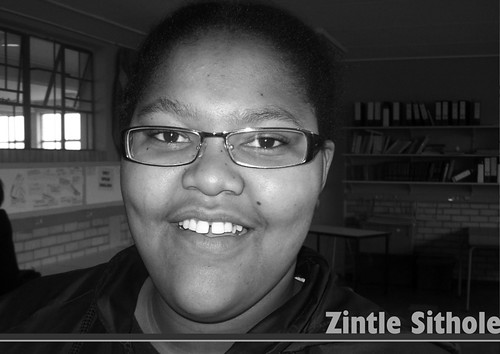
What the money is for
We had originally thought to use the Nokia N95 that we were so kindly given by Pop!Tech, this is a fairly costly device to have an accident happen to, so we have decided to ask the AfriGadget community help us purchase the Sony Ericsson C702. According to Frerieke,
“The phone that was most convincing to me due to it’s nice robust appearance – no sliding or flipping to open, it’s solid, easy to use, doesn’t look too fancy and it is splash and dust resistant (useful in the sandy township).”
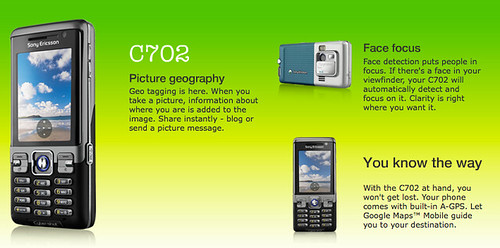
Your part
We could use your help in a number of areas. First and foremost, just help spread the word about the project. If this pilot project turns out well, we’ll be doing this in many other untapped parts of the continent, and we’ll need even greater support.
Second, donate using the Chipin widget above, or to main@afrigadget.com
Lastly, thank you for being part of this community, for helping it get traction and grow all over the world.
[Update: After talking with support at ChipIn, they told me it is no longer supported, unless you create it through their new service SproutBuilder. I have done this, and a new widget is available above.]
Mobile Phone Ingenuity in Africa
This last week I had the opportunity to catch up with one of my favorite bloggers, Jan Chipchase, while we spoke together on a panel at the Global Philanthropy Forum. Jan works for Nokia as what can best be described as a design and usability ethnographer. He explores the way mobile phones are used worldwide and reports that back to Nokia’s design team. He’s a fascinating person to talk to, and I thought I might highlight some of the stories he’s come up with while exploring in Africa.
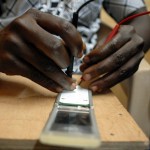 One of the consistent themes of Jan’s message is that it in each country he visits there is a booming market of hackers and mobile phone mechanics who are doing all kinds of interesting things. They are taking the designs of the West and applying them to their lives, modifying them and making them work for their local needs. From Accra to Nairobi, there is always a “cell phone alley” for you to buy, repair or customize your mobile phone.
One of the consistent themes of Jan’s message is that it in each country he visits there is a booming market of hackers and mobile phone mechanics who are doing all kinds of interesting things. They are taking the designs of the West and applying them to their lives, modifying them and making them work for their local needs. From Accra to Nairobi, there is always a “cell phone alley” for you to buy, repair or customize your mobile phone.
In a post titled, “Recycled, Upcycled: Remade” he tackles the question of whether it is possible to create a phone completely of recycled parts.
Of all the internal concepts I’ve followed this year this is one I keep returning to, not least because sustainability is a pressing issue in a billion+ products-per-year industry – but also because the team tackled a number of related weighty issues in what was a far reaching project. I hope that in due course more of their design thinking makes it into the public domain, not least to stimulate critical feedback from people like your good selves.
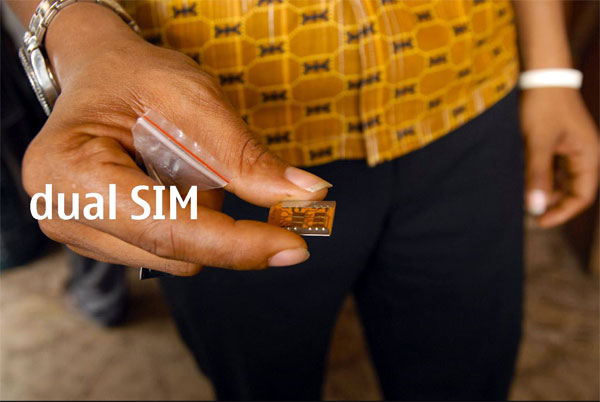
One of the more interesting innovations is the development of a dual SIM card hack so that users can access multiple carriers.
This product has two SIM card slots in a single phone – primarily to support price sensitive/prudent consumers who wish to optimise their call costs by maintaining SIM cards from two different phone operators. As in many countries – calls to a customer using a different Ghanaian operator cost slightly more than those on the same network.
There are many more examples of mobile phone use in Africa and the ingenious solutions that locals come up with for their particular situations on Jan’s blog. The last image that I want to show is of the Village Phone project (by Grameen Bank) happening in Uganda. Jan has taken an excellent picture and annotated it with the important facts about this project in a rural Uganda.
For more information about Jan, read this recent NY Times article about him, and of course subscribe to his blog, Future Perfect.


